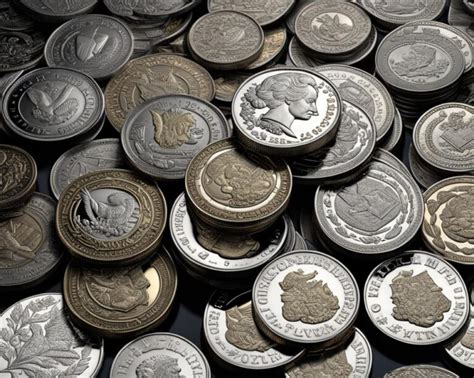Introduction
Silver dollars, once a common form of currency, have become increasingly sought after by collectors and investors alike. Understanding the weight and value of silver dollars is crucial for those looking to buy, sell, or trade these coins. This comprehensive guide will delve into the intriguing question: “How many silver dollars in a pound?”

Silver Dollar Basics
- Definition: A silver dollar is a coin made of 90% silver and 10% copper, with a weight of 26.73 grams (0.85 troy ounces).
- History: Silver dollars were first introduced in the United States in 1794 and remained in circulation until 1935.
- Numismatic Value: The value of silver dollars depends on several factors, including rarity, condition, and collectible appeal.
Weight Conversion: Pound to Silver Dollars
- 1 pound (lb) = 453.592 grams
- 1 silver dollar = 26.73 grams
Therefore, 1 pound = 453.592 grams / 26.73 grams per silver dollar = approximately 16.97 silver dollars
Coinage Act of 1873
The Coinage Act of 1873 discontinued the production of silver dollars for circulation, replacing them with trade dollars intended for export. However, silver dollars continued to be struck for collectors and numismatic purposes.
Numismatic Silver Dollars
Numismatic silver dollars are collectible coins with intrinsic value due to their rarity and historical significance. These coins come in various denominations, including:
- Morgan dollars (1878-1904, 1921)
- Peace dollars (1921-1935)
- Eisenhower dollars (1971-1978)
- American Silver Eagles (1986-present)
Silver Bullion Coins
Silver bullion coins, such as the American Silver Eagle, are produced primarily for their metal content rather than numismatic value. These coins are typically sold at a premium over the spot price of silver and are a popular investment vehicle for those seeking exposure to precious metals.
Factors Influencing Silver Dollar Value
Several factors influence the value of silver dollars, including:
- Rarity: Scarcer coins command higher prices.
- Condition: Well-preserved coins are worth more than damaged ones.
- Collectible Appeal: Coins with historical significance or unique designs are more sought after.
- Market Demand: The demand for silver dollars fluctuates, affecting their prices.
Value Chart for Silver Dollars
The following table provides an approximate value range for various silver dollar denominations:
| Denomination | Value Range (USD) |
|---|---|
| Morgan Dollar | $20 – $200 |
| Peace Dollar | $30 – $150 |
| Eisenhower Dollar | $10 – $50 |
| American Silver Eagle | $30 – $60 |
Market Insights
The silver dollar market is dynamic, influenced by global economic conditions, supply and demand, and investment trends.
- In recent years, the demand for silver has increased due to its perceived value as a safe haven asset during economic uncertainty.
- The supply of silver dollars is finite, with the majority of coins produced before 1935.
- The value of silver dollars has generally trended upwards in the long term, making them an attractive investment for some.
Tips and Tricks
- Handle Silver Dollars Carefully: Avoid touching the surfaces of coins with your bare hands, as oils and fingerprints can damage their value.
- Store Silver Dollars Properly: Keep coins in airtight containers or holders to prevent oxidation and tarnishing.
- Consult with Experts: If you’re considering buying or selling silver dollars, seek guidance from reputable dealers or numismatic experts.
- Stay Informed: Monitor market trends and economic news to make informed decisions about investing in silver dollars.
Future Trends
The future of the silver dollar market is influenced by several factors:
- Economic Outlook: Economic downturns can increase the demand for precious metals, boosting silver dollar prices.
- Government Policy: Changes in government policies regarding precious metals can impact the value of silver dollars.
- Technological Advancements: New technologies may emerge that affect the production and distribution of silver dollars.
Conclusion
Understanding how many silver dollars are in a pound and the factors influencing their value is essential for collectors, investors, and anyone interested in numismatics. By leveraging this knowledge, individuals can make informed decisions about buying, selling, or trading silver dollars, potentially realizing significant financial returns or preserving historical artifacts. As the silver market continues to evolve, staying informed and seeking expert advice is crucial for navigating its complexities and maximizing investment opportunities.



